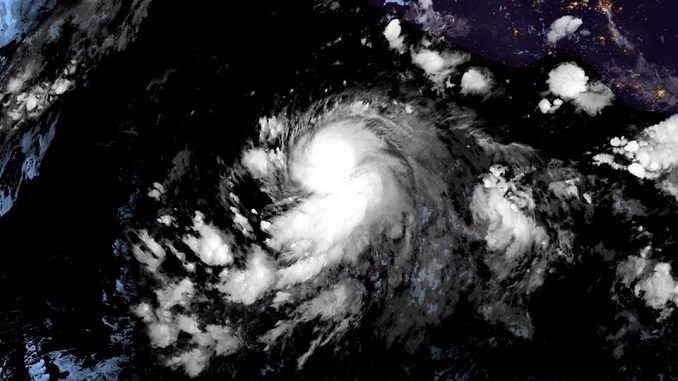
Category 4 hurricane Sergio remains in full power around the area of the Pacific, the National Hurricane Center reported, adding that what draws more interest is what Sergio might do next.
The hurricane is currently located some 800 miles southwest of Cabo San Lucas and is moving at approximately 9 miles per hour. Although it packs maximum sustained winds and intense thunderstorms, there is no threat to land in the west and northwest region.
That’s likely to change, however, and the southwest U.S., including Southern California areas Los Angeles and San Diego and parts of the Desert Southwest including Phoenix, which just experienced heavy rain and some flooding from the remnants of Hurricane Rosa, could get heavy rain from Sergio late next week.
“Into this weekend, the track of Sergio will take the storm farther out to sea and over cooler waters which will allow gradual weakening,” according to AccuWeather Hurricane Expert Dan Kottlowski. “However, a turn toward the north is likely early next week, followed by a turn to the northeast and an increase in forwarding speed is possible later next week.”
That Sergio storm track would bring the hurricane across Baja California, just as Hurricane Rosa did last week. That could bring rain downpours from Los Angeles to San Diego and into Phoenix, Arizona, Accuweather forecast maps showed Wednesday. The latest forecast models show Sergio would be at tropical storm strength when it made landfall across Baja California.
“Thee (European) and (GFS) model runs from Wednesday night suggest that Sergio could make a run for Baja California as a weakening tropical storm late next week,” reported Dr. Jeff Masters of Weather Underground.
The official National Hurricane Center forecast is in agreement that Hurricane Sergio will make a turn in the coming days.
“Late this weekend, a decrease in forwarding speed is expected as the ridge retreats in response to a large trough over the southwestern United States,” the National Hurricane Center said in an update late Wednesday. “This change in the steering pattern should cause the cyclone to turn northeastward by the end of the forecast period.”

Be the first to comment